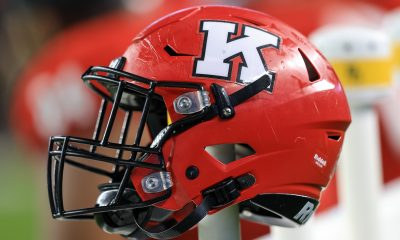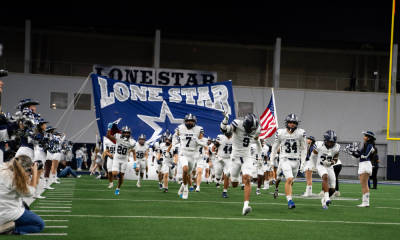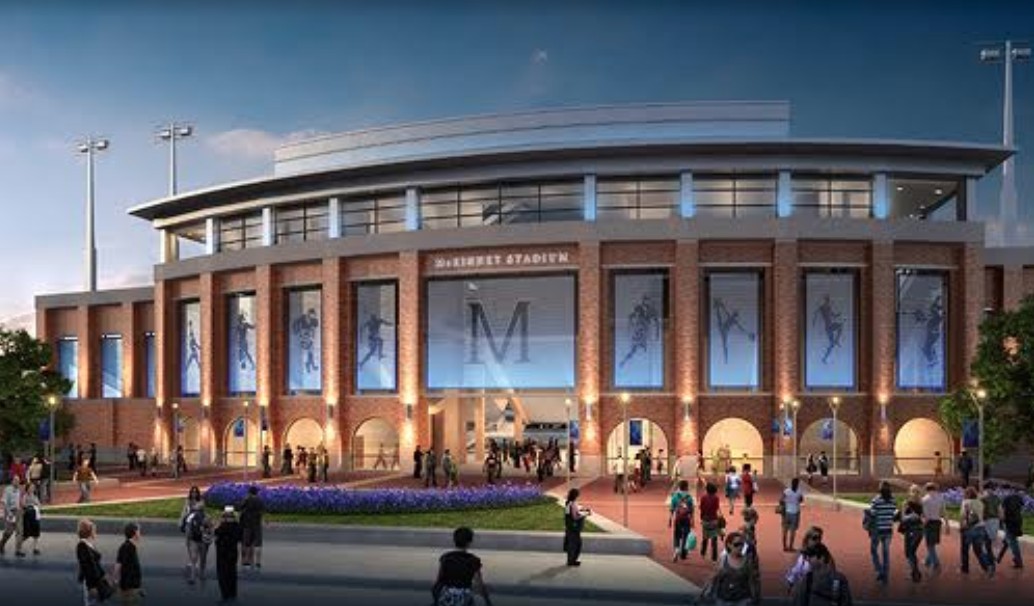Photo via mckinneyisd.net
By: Payton Smith (@paytonmichele)
September 21st, 2016
There’s a very thin line between traditional Texas giants and preposterous monstrosities. Big spenders like to fall back on the old adage that everything in Texas is bigger when proposing, supporting, and building multi-million dollar football stadiums for high school boys. Advocates argue that such projects provide the best facilities for students, thereby increasing their potential for success and the opportunity to play at the next level. Others add that the economic development it adds to the community and school is indispensible. Some even find the greatest advantage to come in the comfort and amenities made available to fans and guests who spend so much time cheering on the team and supporting school programs.
But what’s on the other side of the glitz and glamour? The elaborate architecture? The state-of-the-art equipment? What message is being sent to young people and how are they being unknowingly and adversely affected?
Less of a Leap
Texas consistently ranks among the top states from which to recruit elite talent. This was true before the conception of gargantuan stadiums and will remain true tomorrow. Will colleges begin to see the implications of giant high school facilities before local school districts do? College coaches have a certain level of expectation of the transition that the athletes they recruit will face upon joining the program. Recent graduates arrive on campus, are exposed to state-of-the-art college facilities, and begin to take that giant stride of progress. Those who come from high schools who already have top-of-the-line resources could potentially have less of a leap forward.
Contradicting Curriculum
In the state of Texas, the Texas Essential of Knowledge and Skills (TEKS) are the standards that drive public school education. As early as kindergarten, students are exposed to financial literacy in the classroom. Specifically, kindergarten students are taught to “distinguish between wants and needs and identify income as a source to meet one’s wants and needs.” Comparable standards endure all the way through 8th grade where students must “solve real-world problems comparing how interest rate and loan length affect the cost of credit.” While these standards aren’t explicitly outlined in high school, they are embedded in economics and math models. If this is the knowledge required of our students, would the decisions that public school systems are making be able to pass STAAR, the state’s standardized assessment? It seems students are being taught fiscal responsibility but shown something on the contrary.
Play the Game of Comparisons
Eagle Stadium, home of the Allen Eagles, is valued right at $60-million. This number was, of course, before it was condemned for faults in its structure. Since then, it has been repaired and reopened. Perhaps educators can make some real world connections for students using the district’s $499,128,037 (www.texastransparency.org) of tax-supported debt as of the 2014-2015 school year.
Right down the road from Allen, McKinney ISD voted to one-up Eagle Stadium by building their own 12,000 seat capacity stadium with a hefty price tag of $62.8 million. In building this little gem, the district will assume a debt of $450,650,000.
Oh, but let’s be sure to add interest to our lesson on financial literacy bringing the total owed to $638,060,218. As with many financial undertakings, unexpected expenses occur. As is true with McKinney who had to revisit the initial investment and bump it to $69.9 million – making it the most expensive high school football stadium in the nation.
The epidemic isn’t isolated to Dallas Fort Worth. Take a trip south to Katy ISD outside of Houston, where they are building a complex that will house 12,000 fans.
The project is scheduled to be finished in 2017 and will cost the district $62.5 million, a number that was inflated after the initial proposal due to unplanned expenses. Katy ISD is in the red with no sight of coming out of the deficit of more than $748-million any time soon.
Frisco ISD athletes actually play in the most valuable stadium, The Star. This complex doubles as the Dallas Cowboys practice facility and is valued at $255.5 million, but the entire bill is not covered by the school district.
***
It is natural to want the very best for children and students, but at what expense? What message is being sent to young people? You need the latest, greatest, best of everything in order to perform and put forth your best efforts?
Allen, McKinney, and Katy are all homes to incredible football teams, phenomenal coaches, and stellar schools. Is the added debt to also toss in an unbelievable stadium truly necessary? Will the tremendous debt these districts are undertaking serve as deterrents for other districts to refrain from doing the same or are the days of fresh grass, chalked lines, and hometown football fields becoming part of Texas high school football history?


















Spot on